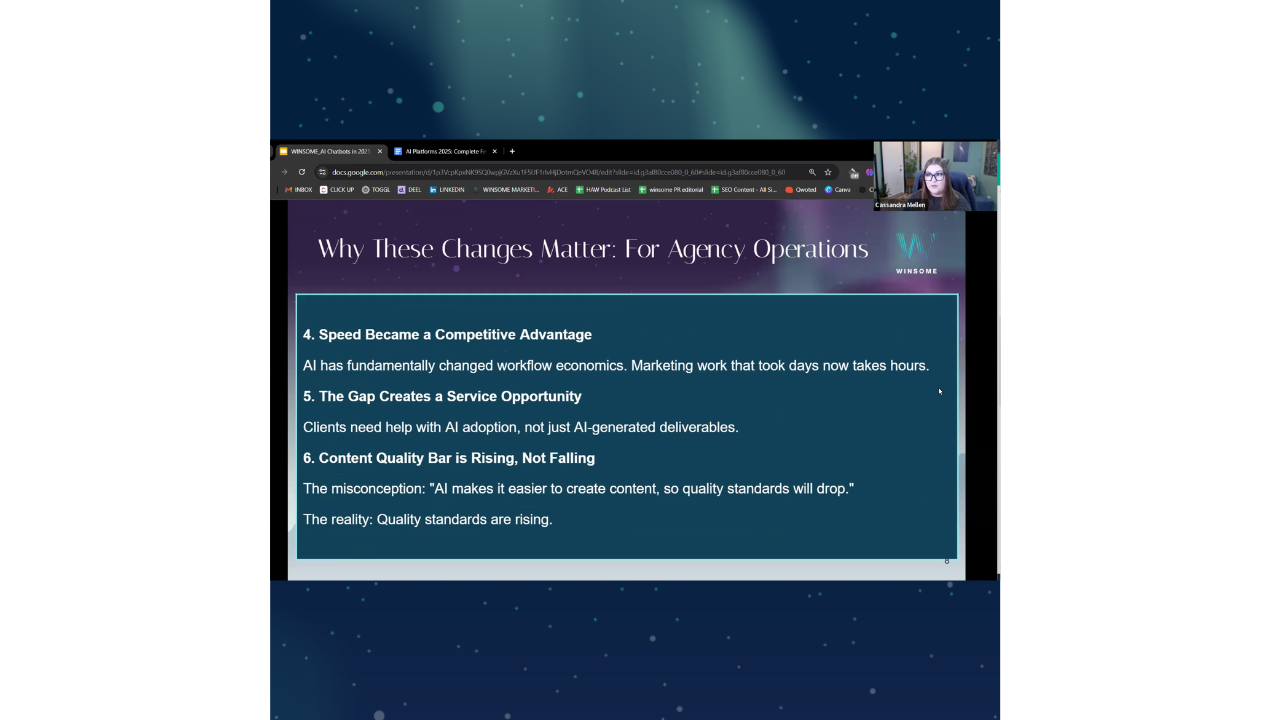Ambient Computing and Marketing: When Technology Becomes Invisible
The best technology disappears. It becomes so seamlessly integrated into our environment that we stop noticing it's there at all.

In today’s fast-paced marketing world, generative AI is often seen as a productivity powerhouse, offering the potential to significantly increase the volume of content produced. While AI can certainly help marketers achieve higher output, it’s critical to approach this productivity boost with a structured plan for content management and quality control. Without these, the benefits of AI-generated content may be limited, leading to wasted resources and diluted brand impact.
Here’s a closer look at how professional marketers can effectively harness generative AI while maintaining content quality and ensuring that high-volume production aligns with strategic goals.
Before increasing content production, it’s essential to establish the purpose of that content. Generative AI can indeed help you scale from producing four blog posts a month to forty, but without a defined objective, this rapid content expansion risks becoming scattered and less effective.
Consider your target audience and the specific goals each piece of content should achieve, such as:
Establishing clear goals helps prioritize content quality over sheer quantity and aligns AI-generated pieces with your overall marketing strategy.
Creating more content is only beneficial if it’s properly managed and utilized. The influx of AI-generated content requires a well-defined plan to handle increased content volume without overwhelming your team or diminishing quality. Here’s how to organize content for maximum efficiency:
While AI-generated content can boost volume, maintaining quality is crucial to ensure that each piece accurately represents your brand voice and offers value to readers. Quality control should be a central part of your AI content strategy, as scaling up often necessitates more intensive review processes.
Although generative AI can significantly reduce content production time, it doesn’t eliminate the need for human input. A significant volume of content requires dedicated human resources to oversee the editorial and strategic aspects of content management.
AI content creation is a continually evolving process. Establishing a feedback loop helps improve the quality of AI-generated content over time, ensuring that it better serves your brand’s needs and resonates with your audience.
While generative AI offers an exciting avenue for marketers to increase content production, a balanced approach that values both quantity and quality is key to making the most of this technology. By establishing clear objectives, prioritizing quality control, and ensuring human oversight, marketers can leverage AI’s strengths to scale their content efforts without compromising brand standards.
With a structured plan, AI can help produce meaningful, impactful content that resonates with audiences and supports your brand’s goals, transforming productivity into real, measurable results.

The best technology disappears. It becomes so seamlessly integrated into our environment that we stop noticing it's there at all.

There's a misconception that AI makes it easier to create content, so quality standards will drop. The reality? They're rising.

As a content leader in 2024, leveraging AI technology has become an essential part of the daily workflow. Whether you’re managing a content team,...